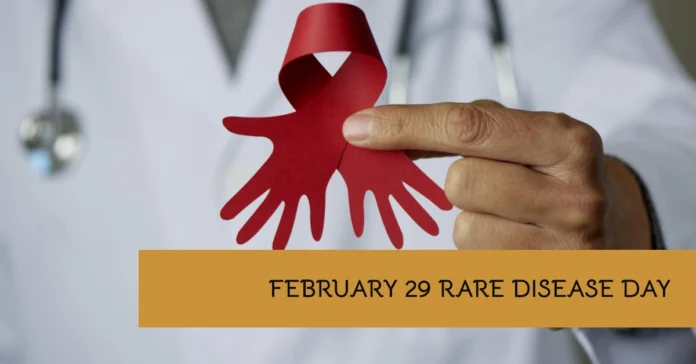Rare Disease Day is observed on the last day of February each year, falling on February 29th during leap years. This international event was first celebrated in 2008, initiated by the European Organization for Rare Diseases (EURORDIS) and various national alliances of patient organizations. The day was chosen to emphasize the rarity of these diseases, with February 29th being the rarest day on the calendar. The aim of Rare Disease Day is to raise awareness about rare diseases and their impact on patients’ lives.
Rare diseases are those that affect a small percentage of the population. In the United States, a disease is considered rare if it affects fewer than 200,000 people. In Europe, a disease is classified as rare when it affects fewer than 1 in 2,000 people.
There are thousands of known rare diseases, and collectively, they affect millions of people worldwide. These diseases are often chronic, debilitating, and life-threatening, with limited treatment options available.
Rare Disease Day is an opportunity for patients, families, healthcare professionals, researchers, and policymakers to unite in raising awareness about rare diseases and advocate for better access to treatments, healthcare services, and support. Events and activities organized on this day include conferences, workshops, information campaigns, social media initiatives, and fundraising events.
To celebrate Rare Disease Day, people can:
1. Participate in local events and activities organized by patient organizations, healthcare institutions, and research centers to learn more about rare diseases and their impact on patients and families.
2. Share personal stories, experiences, and information about rare diseases on social media, blogs, and other online platforms using the official Rare Disease Day hashtag (#RareDiseaseDay) to raise awareness and encourage public support.
3. Donate to organizations and research institutions dedicated to finding treatments and providing support for patients and families affected by rare diseases.
4. Advocate for policies and initiatives that promote research, development, and access to treatments for rare diseases, as well as improve healthcare services and support for patients and their families.
By commemorating Rare Disease Day, the global community aims to raise awareness, foster research, and promote collaboration among stakeholders to improve the lives of those affected by rare diseases.
Hidden Object Games
Step into the world of medical mysteries with our “February 29: Rare Disease Day” hidden object game. In this leap year special, journey through carefully designed scenes depicting various healthcare settings and search for objects related to rare diseases and their research.
This game is perfect for those interested in medical science, puzzle games, or anyone looking to learn more about the intriguing world of rare diseases.
